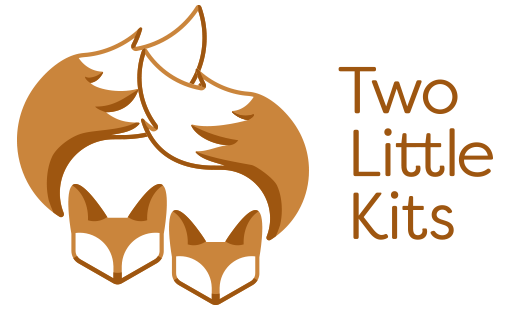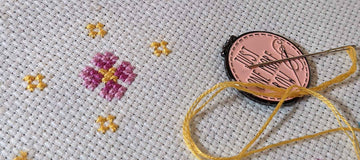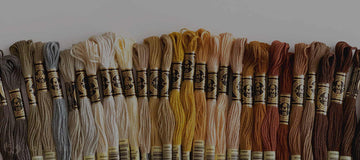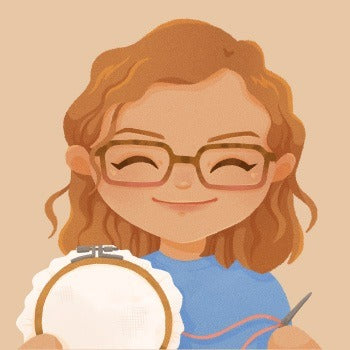Discovering Cross-stitch: A [Detailed] Guide to This Relaxing Craft
Welcome to the world of cross-stitch—a simple, yet incredibly rewarding form of embroidery that has been around for centuries. If you’ve ever been curious about trying your hand at this craft, you’re in the right place! Cross-stitch is easy to learn, relaxing to do, and offers endless creative possibilities.
In this guide, I’ll walk you through the basics, a bit of history, and why so many people (myself included!) find it to be such a fulfilling hobby.
A Quick Stitch Through History
Cross-stitch is one of the oldest forms of embroidery, with origins dating back to the Middle Ages. It was commonly used to decorate household linens, with intricate patterns passed down through generations.
Unlike 'freehand' embroidery, cross-stitch follows a structured, grid-based design made up of tiny ×-shaped stitches. This makes it one of the most beginner-friendly embroidery techniques, as the pattern tells you exactly where to stitch, while you know exactly how to stitch it.
Cross-stitch is, at its core, an embroidery stitch rather than an entirely separate craft. While some forms of embroidery focus on freeform designs, cross-stitch relies on counted grids, making it a unique but integral part of the embroidery world. You can liken cross-stitch to modern pixel art, as each square can correlate to one pixel!

Who Cross-Stitches Today?
Cross-stitch has seen a resurgence in popularity, with stitchers from all walks of life embracing the craft. While it was once associated with traditional samplers, today’s stitchers include (but are not limited to):
- Hobbyists looking for a relaxing creative outlet
- Artists blending modern designs with traditional techniques
- People who enjoy crafting gifts with a personal touch
- Those who use cross-stitch as a mindful, meditative practice
- Communities that gather online and in-person to share projects and inspiration
- …or all of the above, like me!

The Essentials: What You Need to Get Started
One of the best things about cross-stitch is that it requires only a few basic supplies:

- Fabric: The most common choices are Aida cloth (great for beginners), evenweave, or linen. These fabrics have a natural grid, making it easy to see where each stitch should go.
- Floss: Embroidery floss (also known as thread) is typically used, with six strands that can be separated for different thicknesses.
- Needle: A blunt tapestry needle glides through fabric without splitting the threads.
- Pattern: Whether printed or digital, cross-stitch patterns provide a step-by-step guide to creating your design.
- Scissors: Small, sharp embroidery scissors make cutting threads precise and easy.
- Hoop or Q-Snap:* Helps keep your fabric taut for easier stitching.
(*Optional)
Cross-Stitch Pattern Styles: Counted vs. Stamped
What is Counted Cross-Stitch?
Counted cross-stitch is a specific type of cross-stitch where you have to "count" your fabric to determine stitch placement rather than following a pre-printed design. The pattern provides a grid-based guide, and you work from a blank piece of fabric, aligning each stitch accordingly.
This allows for greater flexibility in design placement and often results in more intricate and detailed pieces, sometimes incorporating empty white-space. It also means you can pick and choose things like:
- The fabric type you wish to stitch on,
- The fabric count (which changes the final size of your piece - see more information below), and
- What kind of colour fabric you'd like to stitch on!

What is Stamped Cross-Stitch?
Stamped cross-stitch is a beginner-friendly alternative to counted cross-stitch, but only comes in pre-packaged pattern kits.
Instead of starting with a blank piece of fabric, the design is pre-printed directly onto the [usually white] fabric, showing you exactly where to place each stitch. This method is great for those who prefer a more guided approach or want to focus on the stitching itself without the added challenge of counting stitches. Once the piece is complete, the printed design either washes away or is fully covered by the stitches, leaving a beautifully finished project.
The Nuances of Cross-stitching
As you get deeper into cross-stitch, you’ll start to notice some finer details that can impact your stitching experience and final results:
- Fabric Count Matters - Fabric count refers to the number of stitches per inch. Aida 14-count (14 stitches per inch) is beginner-friendly, while higher counts like 18 or 22 create smaller pieces with finer details.
- Fabric Types Differ - Aida is structured and easy to use, while evenweave and linen provide a more refined look but require careful counting.
- Anchoring Your Floss - Instead of using knots, you can (and should!) secure your thread by weaving it under existing stitches for a cleaner back.
- Tapestry Needles over Embroidery Needles - Tapestry needles have a blunt, rounded tip that prevents splitting fabric threads, making them ideal for cross-stitch.
- Starting in the Center or Gridding Your Fabric - Many patterns suggest starting from the center of your fabric to ensure proper placement. Gridding allows you to pre-plan your project's position and easily start wherever you like.
- Keeping Tension Even - Too-tight stitches can distort the fabric, while loose stitches can appear uneven or floppy.

How to Cross-stitch: The Basics
If you’re new to cross-stitch, first of all: Welcome! Here’s a simple breakdown of how it works:
- Read the pattern - Patterns use a grid system with symbols that match thread colours.
- Start your stitch - Secure your thread with a simple loop start or by anchoring it under stitches - not with a knot!
- Make an × - Cross-stitch is made up of two diagonal stitches forming an ‘×’. Keep them uniform for a neat look.
- Manage tension - Avoid pulling too tightly to keep your fabric smooth and even.
- Finish neatly - Weave in the ends on the back of your fabric to keep things tidy.
For detailed help on getting started with cross-stitch, I have some excellent "lesson" posts on my website:

Cross-stitch in the Modern Age
Cross-stitch has come a long way from traditional samplers and floral motifs. Today, it’s a way to express personality, create fun and modern artwork, and even stitch up a bit of humour.
I love designing patterns that reflect real life—whether it’s something geeky, mental health-related, or just a pretty floral scene. If you’re looking for contemporary cross-stitch patterns, you can check out my shop for a mix of traditional and modern designs!

The Benefits of Cross-stitch
Beyond being a fun craft, cross-stitch has some surprising benefits:
- Relaxation & Mindfulness - The repetitive motion of stitching is meditative and helps reduce stress.
- Sense of Accomplishment - Completing a project (even a small one!) gives a real sense of achievement.
- Creativity - You can follow a pattern or even create your own unique designs.
-
Community -
There are thriving online groups where stitchers share progress, advice, and encouragement.
You can always join the Two Little Kits' Facebook Group for likeminded stitchers!


Ready to Give It a Go?
If you’ve been looking for a hobby that’s creative, calming, and rewarding, cross-stitch is a fantastic choice. Whether you want to make beautiful home decor, stitch a heartfelt gift, or just enjoy the soothing process, this craft is for you.
So grab a needle, pick a pattern, and start stitching—your journey into cross-stitch begins now!






